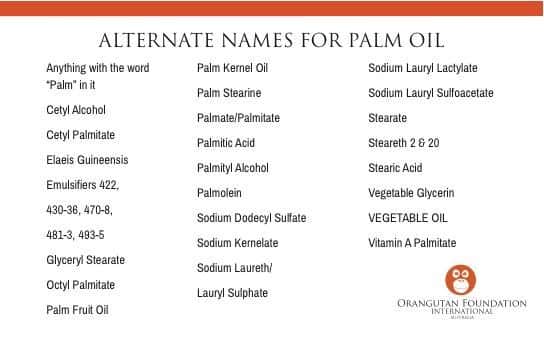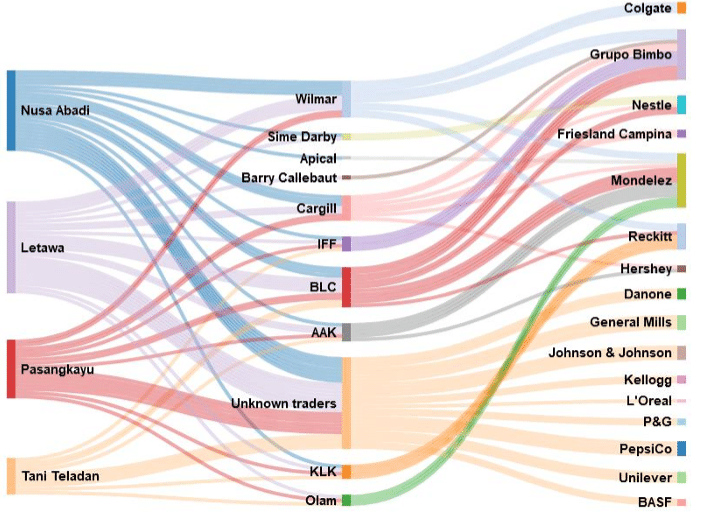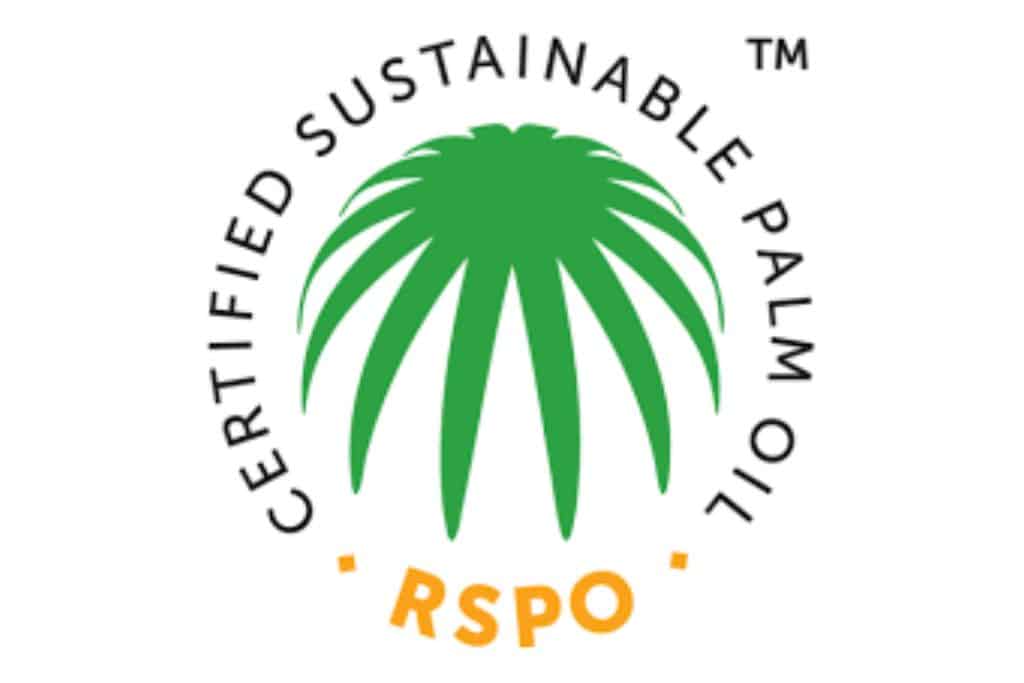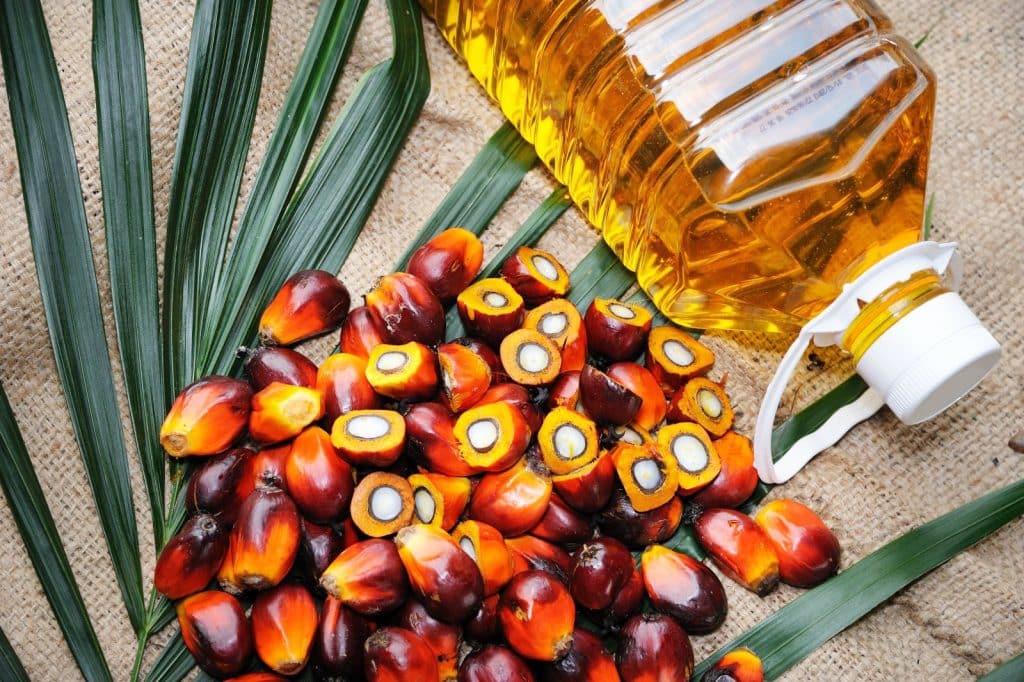Palm oil is the most used edible oil source in the world, found in around 50% of everyday products. Highly complex supply chains and lack of transparency foster illegal and unsustainable practices of clear-cutting forests that continue to contribute to deforestation in one of the planet’s most biodiverse ecosystems. How can palm oil consumption be made more sustainable and what are some tips for conscious consumers to lessen their environmental impact through buying power?
—
What Is Palm Oil?
Palm oil is a globally used edible oil with unique properties that makes it highly versatile. It is partially solid at room temperature, its high melting point makes it a great frying oil, it is odorless and colorless as well as resistant to oxidation, acting as a great preservative for foods to extend shelf life. Palm oil is found in everything from processed foods like peanut butter and pastry products to hygiene products like lipstick and shampoos. Originally native to West Africa, oil palm (Elaeis guineensis) is now mainly grown in Indonesia and Malaysia, which produce over 85% of the world’s crude palm oil supply.
Palm Oil and Deforestation
The traditional and still most commonly used method of growing oil palm trees is to clear cut tropical forests to make way for plantations and processing mills. This multi-level impactful practice destroys habitat, increases human-wildlife conflicts, and contributes to human-driven climate change.

Habitat Destruction
Palm oil has been the main driver of deforestation in Southeast Asia for decades. Since the 1960s, the island of Borneo has lost roughly 60% of its forests.
Deforestation from the expanding palm oil industry peaked between 2000-2016 when it accounted for 25-30% of annual global deforestation. Rates of deforestation have been slowly but steadily decreasing in the past several years. However, a 2023 article on the issue has highlighted that related deforestation in Indonesia has begun climbing again after a decade of decrease.
Forest clearing threatens numerous species threatened with extinction. Including all three species of orangutans, Sumatran Rhinos, Sumatran Tigers, and countless others.
Human-Wildlife Conflicts
As forests are cleared, animals lose habitat and their sources of food. This often leads to animals needing to cross palm oil plantations to reach other patches of forest. As the oil palm fruits are edible, orangutans, elephants, and other fruit eating mammals will often be injured or killed by plantation workers to protect the crop.
Human-Driven Climate Change
Palm oil related deforestation contributes on average 2-4% of annual global greenhouse gas emissions. A large issue with forest clearing for palm oil is that it is mainly done so on peatlands, a type of wetland habitat that is extremely efficient at storing carbon. It is estimated that peatlands store twice as much carbon in the forests globally.
To grow on peat, they must be logged and drained, releasing an estimated 438 million tonnes of carbon dioxide (CO2) each year. This is equivalent to the same amount of CO2 released annually by vehicle traffic in all of the European Union (EU).
Continued Deforestation and Illegal Clearing
Unfortunately, the complexity of the palm oil market and lack of oversight and enforcement makes achieving sustainability a difficult challenge. While corporations like Nestle, PepsiCo, Unilever and others that combine to own hundreds of brands of everyday products all have set Commitments to No Deforestation, No Peat and No Exploitation (NDPE), many of them are failing to meet these commitments and are still sourcing palm oil from illegal operations.
More on the topic: Palm Oil Deforestation: Origins, Environmental Degradation and Solutions
Complexity of the Palm Oil Market
Palm oil is not only widely used but also very hidden in products. There are over 200 names for palm oil and its derivatives that are used in ingredients lists on packaging.

The wide presence of palm oil in products globally is only the tip of the iceberg of how complex the palm oil industry is. In Indonesia alone, there are over 1,500 registered palm oil firms. This includes large production companies that own numerous plantations, processing mills, and distribution centers, as well as small stakeholders. Corporations that own numerous brands of products and distribute across the globe often have very complex supply chains for palm oil. For example, Unilever, a corporation that owns brands like Ben & Jerry’s ice cream, Dove hygiene, Lipton tea, and numerous others, lists over 1,600 individual palm oil plantations and close to 200 oil refinery plants in their supply chain reports. With a highly complex system of companies for cultivation, refining, distribution, and product creation, the palm oil market is incredibly intertwined.

Making Palm Oil Sustainable
In an attempt to bring transparency and accountability to the palm oil industry, efforts have been made to trace and certify palm oil as sustainable. In 2004, the Roundtable on Sustainable Palm Oil (RSPO) was created with the goal of making the palm oil industry more sustainable. As the global leader in palm oil sustainability work, the RSPO uses a detailed certification process to ensure companies are using sustainably sourced palm oil across their entire supply chain, from growing to distribution.
The proportion of the palm oil industry certified as sustainable has remained stagnant at around 20% for the past several years, bringing pushback against the idea of Certified Sustainable Palm Oil (CSPO). Weaknesses in the RSPO certification scheme have been found as principal violations exist in supply chains that are certified by the RSPO. Critics of the system also state the RSPO is slow to punish members for violations and that the review process is not detailed enough.
Efforts to make sense of the complexity of the palm oil market should be better supported. Now that the CSPO standards are becoming more rigorous, sustainable practices and accountability will be better promoted.
More on the topic: Should We Avoid Palm Oil?
A Fair and Just Market
Small stakeholders (owning less than 100 hectares) make up 40-50% of the palm oil industry. These small stakeholders are often outcompeted when trying to reach international markets and can be negatively affected by policies meant to increase sustainability. This is often because they lack the financial and support resources to achieve CSPO certification.
For example, the EU’s new Deforestation Regulation may result in increased costs and operational burden for small stakeholders to be able to comply with EU requirements. This could lead to larger producers taking a larger size of the market and harming the livelihoods of often indigenous groups relying on small stakeholder palm oil cultivation for their families. The RSPO has recently brought more support to small stakeholders through its Smallholder Support Fund to mitigate these impacts as much as possible.
Sustainable Purchasing and Consumption
Even though current practices are highly unsustainable, palm oil is likely here to stay. Its yield per tonne is 8-12 times higher than that of other edible oils like sunflower, canola, or coconut oil. This means that producing the same amount of oil would require 8 to 12 times more land, drastically increasing habitat conversion and loss of the planet’s best climate mitigation tool – forests. There are tools and tips for conscious consumers to lessen their environmental impact when it comes to palm oil.
You might also like: Certified Sustainable Palm Oil and Alternatives for the Future
Tip #1: Buy all natural products
Sweet and processed products like chocolate and peanut butter often have palm oil in them to keep texture and as a preservative. However, a lot of these items do not need palm oil in them. Look for darker chocolate varieties that more often do not use palm oil. All-natural peanut butter can be more expensive, but if you have the ability to, purchase peanut butter made of 100% peanuts. A lot of other types of food products often have options that are more natural and do not have the need to use palm oil.
Tip #2: Check the sustainability of products.
The Palm Oil Scan app created by the World Association of Zoos and Aquariums (WAZA) and Cheyenne Mountain Zoo allows you to search for products or simply scan the barcode of an item to check if it is RSPO certified and what its sustainability rating is. Other tools like the WWF Palm Oil Buyers Scorecard can be used as well.


Look for logos of certification schemes to know that the product is using Certified Sustainable palm oil. You can also research the company’s sustainability record yourself, a quick Google search can usually show numerous stories on a company’s sustainability commitments and any recent violations, if any.
The Good News
Consumer pressure surrounding palm oil, like in many other environmentally harmful industries, is driving companies to adopt more sustainable practices like cutting ties with deforestation associated producers. Mindful consumption and increased attention to the devastation unsustainable palm oil production creates can create a continued movement towards sustainability and the protection of wildlife, people, and the climate.
You might also like: How Does Cocoa Farming Cause Deforestation?


















